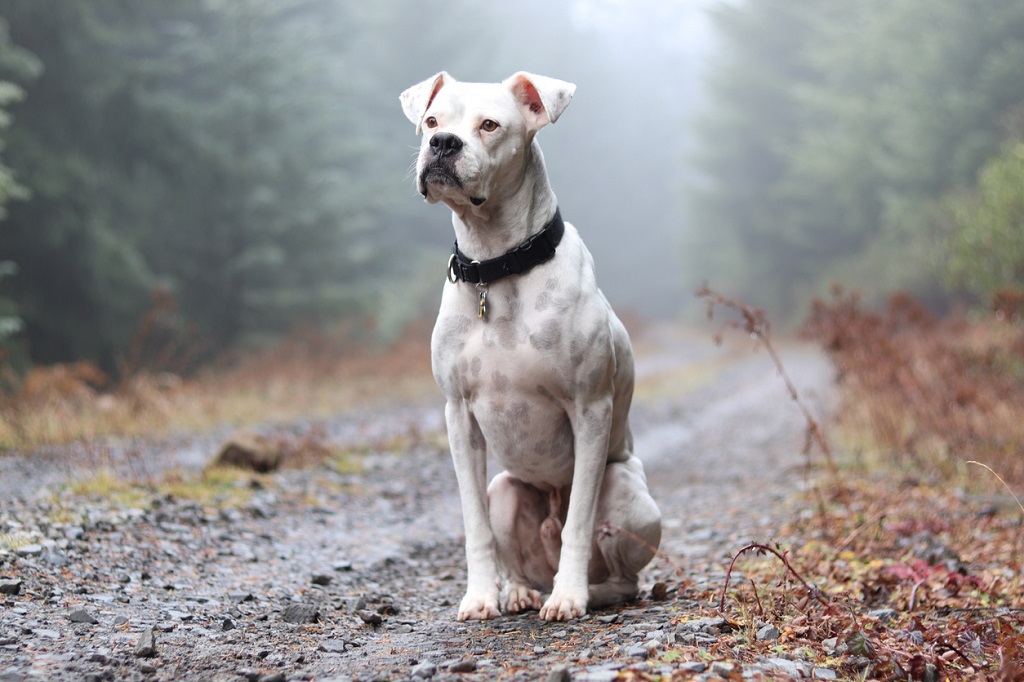In a way, a boxer pup will float like a butterfly and sting like a bee. While they’ll patiently tolerate small children tugging on their ears, they’ll also fearlessly protect your family at the first sign of a threat.1
But, before you high-tail it to your local boxer rescue, you should familiarize yourself with some common boxer health issues.
All dog breeds have their individual quirks, and boxers are no exception. We’re here to help you learn about the seven most common illnesses and conditions that could impact your boxer’s quality of life—and even their lifespan, if they don’t receive proper care.
But we’ll also break down a few tips for keeping your boxer in peak health in the face of genetic predispositions. If you’re ready to become a wise and protective cornerman to the boxer dog in your life, read on.
7 Common Health Conditions in Boxers
If it were up to us, every pup would live an infinite life of belly scratches, fetch, and sunsets at the dog park. That means embracing responsible pet parenthood and doing everything you can to ensure that your fluffy friend can enjoy a long and happy life with your family—which includes making decisions with their breed’s common health issues in mind.
Let’s get into the nitty-gritty of the breed-specific conditions that can impact boxers.
#1 Hip/Elbow Dysplasia
You might have adopted a boxer if you were looking for a big, goofy cuddlebug who could fetch with the best of them—and intimidate strangers with their size. Boxers can grow quite large, sometimes standing as tall as 25 inches and weighing as much as 80 pounds.1
Unfortunately, that means that—like other medium-to-large breeds like the Australian Shepherd, German Shepherd, and Bullmastiff—they’re at risk for elbow and hip dysplasia.
Canine dysplasia generally describes abnormal joint growth–specifically when dogs’ bones grow too quickly for their joints to keep up.2
In boxers, dysplasia is most common in two major joints:
- The hips
- The elbows
And, since both issues generally occur while boxers are still growing, you’re more likely to notice the symptoms relatively early in your pup’s life—typically between four to eight months.3
If you notice any of the following symptoms of hip or elbow dysplasia, you should make an appointment with your vet as soon as possible:
- Limping—especially after exercise or immediately after standing up
- Hesitance to go on a walk or play fetch
- Cracking sounds when the hip or elbow joints move
- Noticeable stiffness while walking, running, standing, or stretching
- Shifting weight away from the affected joint—this might look like constantly picking up one leg to avoid standing on it
While the treatment for both elbow and hip dysplasia is usually surgical, addressing these issues as soon as possible will ensure that your doggo lives a long, happy, and painless life.


#2 Hypothyroidism
If you’re the type of dog parent who cuddles with your pup while you sleep, you’ve probably lamented how hot your dog runs in the summer months and treasured their warmth and cuddliness in the winter. But did you know that your dog has a thermostat?
Veterinarians refer to a dog’s thyroid gland—located in their neck—as the thermostat of their body.4 It also produces thyroxine and numerous other critical hormones.
But, if your doggo’s thyroid isn’t producing enough of these hormones, they may develop a condition called hypothyroidism. Unfortunately, boxers are one of the breeds that most commonly do so.5 You’ll likely notice symptoms of hypothyroidism in one or both of two major areas:
- Their skin, where they can develop
- Alopecia (or hair loss)
- Seborrhea (scaly and red skin, visually similar to eczema)
- Hyperpigmentation (extra-dark patches of skin)
- Their metabolism, which might present as
- Unusual weight gain
- Lethargy or resistance to exercise
- Heat-seeking or lowered body temperature
Hypothyroidism is usually treated with medication or thyroxine supplementation—visit your vet as soon as you notice any of the above symptoms.
#3 Aortic Valve Disease
Heart issues are some of the most worrisome for pup parents—especially since they’re usually only detectable by a vet.
And, unfortunately, boxers are genetically predisposed to some heart conditions, including:
- Aortic valve disease
- Aortic stenosis/subvalvular aortic stenosis (AS/SAS)
- Arrhythmogenic right ventricular cardiomyopathy (ARVC)
- Cardiomyopathy
While we’ll discuss all of these in later sections, let’s start with aortic valve disease.
Human and dog hearts work in nearly identical ways:
- Blood enters the right atrium from elsewhere in the body.
- After flowing into the right ventricle, the blood leaves the heart and enters the lungs.
- The lungs oxygenate blood, returning it to the heart via the left atrium.
- After moving to the left ventricle, blood enters the aorta through the aortic valve.
- The aorta is a big red exit sign—it directs oxygenated blood elsewhere in the body.
In aortic valve disease, the valve separating the left ventricle from the aorta is malfunctioning. This can create several cardiac-related issues, impact your dog’s ability to exercise, and decrease their energy level.6 In serious cases, dogs with aortic valve disease may have shortness of breath or fainting spells.
Vets diagnose the condition by listening to your dog’s heart, where they’ll be able to hear a heart murmur. Then, they’ll closely track your dog’s symptoms, sometimes administering medication or performing surgery.


#4 AS/SAS
Aortic stenosis (AS) describes the narrowing of the aortic valve, and there are three different kinds:
- Valvular aortic stenosis (narrowing within the valve)
- Supravalvular aortic stenosis (narrowing just above the valve)
- Subvalvular aortic stenosis (narrowing just below the valve)
Subvalvular aortic stenosis (SAS) is the most common for dogs and one of the most significant conditions on the list of common boxer health issues.
Luckily, many pups only present mild cases, which may only produce a heart murmur. In mild cases, your vet will likely recommend more frequent vet visits for monitoring.
But, moderate or severe conditions will present similarly to aortic valve disease—SAS is a type of aortic valve disease, after all. As long as you take the precautions and administer the medications or surgeries recommended by your vet, your pup can still live a happy, healthy, and active life.


#5 Boxer Cardiomyopathy
Another common boxer health condition is cardiomyopathy, which presents with the following signs:7
- Dilation (or enlarging) of the ventricles
- Thinning of the ventricular walls
- Decreased blood-pumping function, which could lead to:
- Arrhythmia
- Decreased oxygenated blood delivery to the body
- Congestion of blood in the lungs
While only a vet will be able to observe and diagnose these signs, you might notice the following symptoms in your struggling pup:
- Lethargy
- Weight loss
- Weakness or resistance to exercise
- Heavy or prolonged panting
- Coughing
- Fainting spells or collapse
If you suspect any issues with your dog’s heart, you should visit an emergency vet right away.
#6 ARVC
Arrhythmogenic Right Ventricular Cardiomyopathy (ARVC) is a kind of cardiomyopathy—the condition described above. But, there are a few important elements that distinguish ARVC from general cardiomyopathy:8
- While not all cardiomyopathy cases result in arrhythmia, it’s inherent in ARVC cases.
- It specifically impacts the right ventricle, where blood enters the heart before heading to the lungs to pick up more oxygen.
- Scientists have confirmed that:
- The disease is specific to boxers.
- It’s caused by a deletion in an important heart gene called striatin—and about 40% of boxers have this mutation.
The most common signs are collapse and fainting. If you notice either of the following in your boxer dog, visit the emergency vet as soon as possible.


#7 Degenerative Myelopathy
While you may have chosen a big breed for their big cuddles, large breeds tend to develop spinal issues—boxers are no exception.
One such condition is degenerative myelopathy (DM), which can cause hind limb weakness and (in some cases) paralysis in older dogs. DM develops as the spinal cord’s white matter degenerates, similar to human Lou Gehrig’s Disease (ALS).
While there isn’t a cure for DM yet, boxers with DM can still live happy lives. Owners should pay close attention to their mobility, providing aids when possible and keeping their dogs comfortable.
4 Tips for Keeping Your Boxer Healthy and Happy
The list above seems bleak—but these conditions don’t affect all boxers, and most still live up to their expected lifespan (between 10 and 12 years).
Luckily, there are a few ways you can keep your active dog healthy despite their genetic predispositions:
- Visiting the vet regularly and heeding their advice
- Feeding your pup breed- and age-appropriate foods
- Prioritizing exercise (get that cardio in!)
- Regular routine care and testing for heart-related conditions at the vet and advocating for frequent monitoring
If you’re ever worried about your boxer’s health, know that you’re not alone—you can always drop by the vet or connect with an experienced boxer parent for tips and advice.
BARK: Helping Your Pup Live Their Best Life
While not all common boxer health issues will decrease their lifespan, it’s important to keep a watchful eye on their health and well-being—after all, you want your pup to get in as many barks, boops, and bounding leaps as they can.
This is our mission at BARK—helping you give your pooch everything they need to live a fulfilling, long, playful, and happy life. We offer toys (even indestructible Super Chewers), dental products, and food that were made for dogs by dog lovers.
Always do your own research, but if you need a place to start when it comes to dog food, try BARK food for Boxers! Pro Tip: Get 25% off with code 25FOOD and free shipping!
Everything we do makes it fun to be a dog—and a dog parent. BARK makes magic for all dogs and the humans who love them.
Sources:
- American Kennel Club. Boxer. https://www.akc.org/dog-breeds/boxer/
- American College of Veterinary Surgeons. Canine Hip Dysplasia. https://www.acvs.org/small-animal/canine-hip-dysplasia
- American Kennel Club. Elbow Dysplasia in Dogs. https://www.akc.org/expert-advice/health/elbow-dysplasia-dogs/
- American Kennel Club. Thyroid Disease in Dogs. https://www.akc.org/expert-advice/health/thyroid-disease-in-dogs/
- The Canadian veterinary Journal. Hypothyroidism in a Boxer Dog. https://www.ncbi.nlm.nih.gov/pmc/articles/PMC341946/
- VCA Animal Hospitals. What is Aortic Stenosis?. https://vcahospitals.com/know-your-pet/aortic-stenosis-in-dogs
- Cornell University College of Veterinary Medicine. Canine Dilated Cardiomyopathy. https://www.vet.cornell.edu/hospitals/companion-animal-hospital/cardiology/canine-dilated-cardiomyopathy-dcm
- Upstate Veterinary Specialties. Signs, Symptoms, and Treatment of Arrhythmogenic Right Ventricular Cardiomyopathy (ARVC) in Boxer Dogs. https://www.uvsonline.com/arvc-in-dogs/





